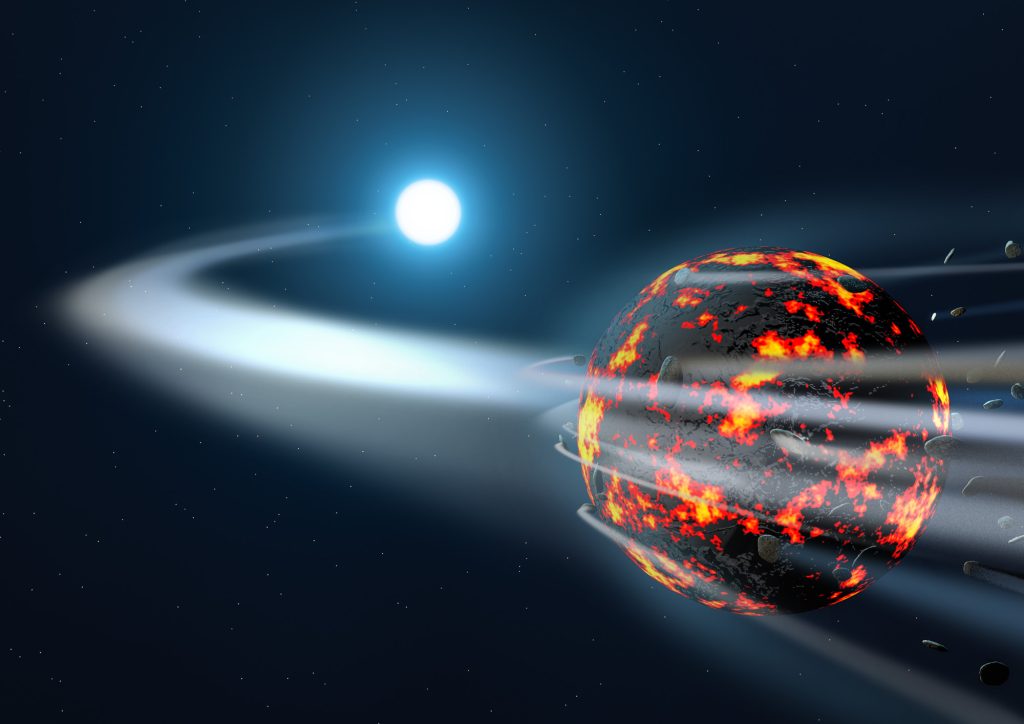Observations and simulations of 237 white dwarf stars bolster evidence that planets and stars form together rapidly and grow into planetary systems. An international team of astronomers and planetary scientists, including Tim Lichtenberg of the Kapten Institute at the University of Groningen, published their findings Monday in natural astronomy.
Planets form in a disk of hydrogen, helium, and small particles of ice and dust around a young star. Dust particles clump together and grow slowly at first. If there are enough together, then so-called minor planets can form. They can then turn into planets. Any debris is left in the form of asteroids or minor planets. These can sometimes affect the star and leave behind a kind of fossil footprint of early geological processes.
There is debate among astronomers and planetary scientists about whether a star forms first and planets form after several million years, or whether planet formation begins roughly simultaneously with the star. The new study reinforces the hypothesis that stars and planets grow together rapidly.
white dwarfs
The researchers analyzed 237 light from the atmosphere for the so-called pollutant white dwarfs. These expired stars are called pollutants because, in addition to helium and hydrogen, they temporarily contain heavier elements such as silicon, magnesium, iron, oxygen, calcium, carbon, chromium, and nickel in their atmosphere.
“The enrichment with the heavy element indicates that the small planets with an iron core fell on the star,” he says. Tim Lichtenberg, one of the study authors. He was working at Oxford University when he started the research and now works at the University of Groningen. “And such an iron core can actually only form if the part has been greatly heated before. Then the iron, rock, and more volatile elements are separated from each other.”
simulation
Additional simulations of asteroid collisions bolster the observations and show that the debris falling into the stars must have been very small. “It is possible that iron cores, like asteroids in our solar system, were formed from heat from the decay of short-lived radioactive elements,” Lichtenberg said. “We suspect that this is aluminum-26. This element also caused the formation of the cores of planets in our solar system.”
The half-life of aluminum-26 is about 700,000 years. Partly for this reason, researchers argue that planet formation around what are now white dwarf stars must have occurred in the first hundreds of thousands of years of stellar life.
In the future, scientists want to expand their research on polluted white dwarfs. For example, the amounts of nickel and chromium in these “celestial tombs” provide information about the size of an asteroid or planet when the iron core formed. This can provide information about the composition of the atmosphere of exoplanets similar to Earth.
Scientific article
Rapid formation of exoplanets revealed by white dwarfs. Written by: Amy Bonsor, Tim Lichtenberg, Joanna Drazkoska, Andrew M. Buchan. In: Natural Astronomy, 14 November 2022. [origineel | kopie (pdf)]


“Thinker. Coffeeaholic. Award-winning gamer. Web trailblazer. Pop culture scholar. Beer guru. Food specialist.”







More Stories
Comet Tsuchinshan-Atlas is ready to shine this fall
Sonos isn’t bringing back its old app after all
Indiana Jones and the Great Circle is coming to PS5 in spring 2025